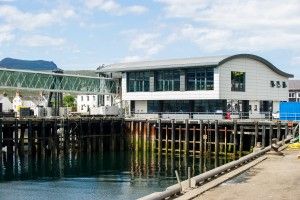SURF was established in 1992 as a forum for practitioners in different sectors to meet and share knowledge and information about what does and doesn’t work in efforts to address physical, social and economic decline in deprived places.

SURF’s article will appear in the People, Place and Policy journal
One of SURF’s founding principles is that the intended beneficiaries of a community regeneration project should be meaningfully involved in its design and development.
The current policy appetite for community led regeneration, and aspirations for greater levels of direct management of regeneration initiatives by community groups, is therefore a generally welcome development from SURF’s perspective.
SURF was recently invited to elaborate on the current context for community led regeneration in Scotland in an in-depth article for the People, Place and Policy academic journal.
We summarised for the journal article recent developments based on learning outcomes drawn from four SURF projects. These are our Alliance for Action research programme, a 2015 participatory budgeting exercise that we managed in Fife, the SURF Awards for Best Practice in Community Regeneration, and consultations for our 2016 manifesto for community regeneration.
This briefing highlights three of the main community led regeneration themes that we drew from these activities.
Scale
One is the impressive scale that community groups are now able to confidently operate at.
Community managed projects may be traditionally associated with modest interventions such as community gardens. But major capital assets such as office buildings, harbours, housing stock, cinemas, museums and wind farms can all be found under community ownership and management, as can a wide variety of services from health and education to employability and business support.
Some of these projects, such as Ullapool Harbour Trust, Oban Phoenix Cinema, Orkney Micro Renewables and Helmsdale Community Development Trust’s housing programme, have been highlighted in the SURF Awards in recognition of their success in not only managing major local assets effectively, but for also providing a basis for a range of wider regeneration activities.
Supportive Environment
The growth of this trend is testament to the supportive environment that has been created for community groups and social enterprises that are looking to deliver local regeneration activities.

Ullapool Harbour is an example of large-scale infrastructure in community ownership
Parliamentary legislation such as the Community Empowerment (Scotland) Act and dedicated funding mechanisms such as the Big Lottery’s Growing Community Assets and the Scottish Government’s Strengthening Communities Programmes are complemented by a wide range of public and third sector players. They are all keen to work together to support the capacity and development of community groups and the projects and assets they aspire to manage in a restricted financial climate.
While even some of the most successful SURF Award winning community managed projects are not able to count on stable and secure long-term funding, there is a positive development in the growing number of options available in grant and loan funding providers.
Geographic Development
Another current theme is geographic development. Many of the most high-profile examples of community led regeneration are in the Highlands & Islands, but there are a number of efforts underway to encourage its growth in the central belt, and to align this growth with other policy priorities such as tackling deprivation and regenerating town centres.
For example, SURF is working with Resilient Scotland, the Scottish Community Development Centre and others to help improve the ability of community groups and social enterprises in disadvantaged urban neighbourhoods to deliver positive social and economic impacts.
SURF also provided a funding panel assessor for the Scottish Government’s 2015 Town Centre Communities Capital Fund, which in November distributed £1.7m to 20 community groups that will be managing physical regeneration projects in town centres including Irvine, Greenock and Lanark.
And from later this year, Scotland’s Community Planning Partnerships will develop and deliver locality plans, which will involve them working closely with community groups to deliver targeted regeneration interventions in some of their most economically challenged areas.
SURF’s full article will appear later this year in the tenth volume of the People, Place and Policy journal and will be freely available online. Please sign up to our mailing list below if you would like to receive notification of publication.
